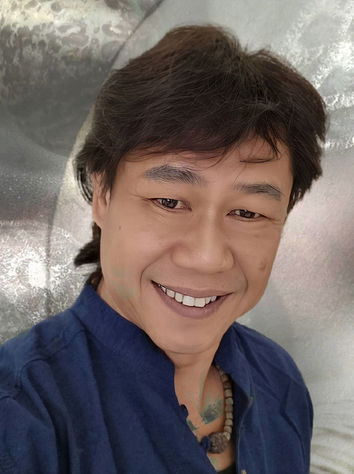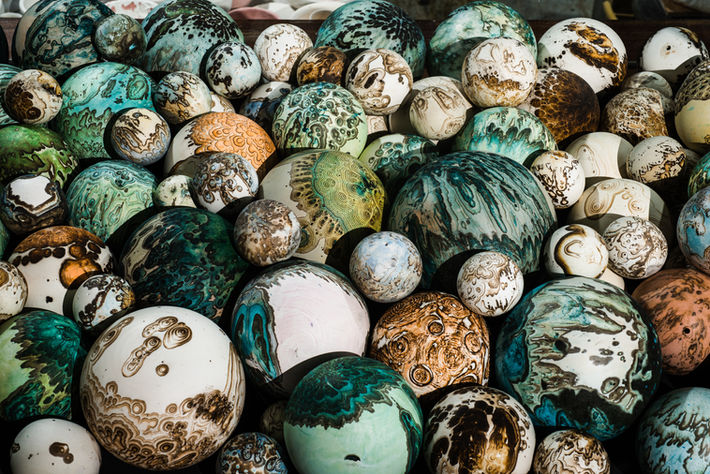Jane Jermyn
Location
Cork, Ireland
About
Jane Jermyn
Jane Jermyn began her ceramics training in her mid-40’s and since then has combined making ceramics with a love of travel, taking part in symposia, workshops and residencies in over 20 countries and exhibiting in many more. She was an invited demonstrator at Aberystywth International Ceramics Festival in 2003, festivals in Korea and Japan in 2011 and India in 2014. In 2025 Jane will again demonstrate at the International Ceramics Festival, Abberystwyth, Wales and “Wedge” the Australian Ceramics Biennale. She has recieved a number of awards from various organisations including the Crafts Council, Arts Council, Culture Ireland, ArtL!inks, Ceramics Ireland and Canberra Potters’ Society.
In 2017 Jane became an elected member of the International Academy of Ceramics based in Geneva. During 2023/24 Jane was the Irish curator of “Irish Wings” & “fired Up”, 5 exhibitions of Irish & Greek ceramics held in Ireland & Greece.
Her ceramics are abstract organic forms that combine geological and organic references. Her inspiration comes from seed-pods, geological formations and weathered decay. It is a celebration rather than an imitation of nature. Her work is in a number of international and private collections.
Jacqui Sosnowski
Jacqui Sosnowski is a retired university tutor, marketing professional and now, a full-time ceramicist. She is particularly fascinated by “alternative firing methods” such as Obvara, Raku and electric saggar. It is the serendipity and unpredictability of these methods which pique her continued interest. She is bored with traditionally “glazed” ceramic ware and doesn’t see the point of doing the same thing over and over again in the hope of achieving the same result. She loves to experiment! This experimental attitude leads to the making of work with a large range of forms and influences. Her ceramic practice includes some tableware but she specialises in containers for ikebana flower arrangement. This satisfies both her love of the Japanese aesthetic along with her love of flowers and enables her to experiment with a variety of unusual forms and surfaces. Jacqui is very involved in the local ceramic community being President of North Coast Ceramics and the co-ordinator of the last five annual Mud Trail events.
Jacqui has an Advanced Diploma in Ceramics and works from her Studio in Mullumbimby. She can be found at www.sosceramics.com and on Instagram @jacquisos.
Steven Low Thai Kwang
Steven Low Thai Kwang’s passion is to spread the love for Ceramic to many people around the world. Steven has conducted numerous classes, workshop and master classes in pottery over the past 30 years .
Steven Low, a ceramic artist and sculptor, has dedicated over three decades to working with clay. He graduated with distinction from the Nanyang Academy of Fine Arts in 1996, and from Curtin University of Technology, Australia, in 1999. Since 1995, Low has exhibited in numerous international solo and group exhibitions. In 2009, he received the Vermont Studio Centre Fellowship in the USA. He has held artist-in-residence at Thow Kwang Pottery Jungle, Singapore and Tanteri Ceramics Studio, participating in the 2014 Jakarta Contemporary Ceramics Biennale in Indonesia. A notable highlight of his career was a month-long residency in 2012 at the FuLe International Ceramic Art Museum (FLICAM) in Shaanxi, China. That same year, Low was a guest artist at the 1st Ceramic Music Festival in Jatiwangi, Indonesia, a hub for ceramic roof tile production. As a member of the Sculpture Society Singapore, Low co-organized the 16th International Chawan Expo Singapore in 2014.
Artist Statement
Demonstration
Hot pots are taken from the kiln at around 750 - 850 C depending on the clay used and plunged into a fermented mixture of yeast, flour, sugar and water, and then straight into cold water to stop the mixture 'cooking'. This gives a very organic, purely decorative finish which is seen instantly – a bit like a photograph developing. Unlike raku, there is no acrid smoke and it is perfect for the impatient potter!
A number of firings can take place during the demonstration time, once the kiln is warmed up in about 45 - 60 mins firstly it then takes around 20-30 mins after that. The demos can last for 2 -3 hours – though the time for the dipping demo (the interesting bit) is around 15 mins each session.
The firings could be used as a fund-raiser, if that is a suitable option. People could bring bisque-fired pieces with them and for a small fee can have their pieces dipped in the obvara mixture or buy simple bisque fired pieces to be dipped and taken away shortly afterwards.
Practice Led Paper
Obrava Firing Technique & How Social Media Helped Save a Nearly Forgotten Tradition
The paper will be given by the three artists. Jane Jermyn will cover the “discovering” of the little known obvara firing technique in Belarus in 2009 and how, through social media, this firing method has spread worldwide. When Jane was invited to Belarus she could find very little at all about the technique at the time. It was even quite difficult to get any information from those who were doing the firings, partly due to a language barrier. Eventually she managed to get enough information to try it for herself back in Ireland, post some images on social media and start a Facebook group due to the amount of interest shown. A power-point presentation will illustrate what is known of the history, the firing technique with examples from the past, very traditional, uses of the technique, right through to the most recent and innovative uses.
Steven Low Thai Kwang, who will speak about his unique method of using this technique in his extraordinary “Planet Series” & “Listen to Mother Earth” an installation which if selected would be exhibited during “Wedge 2025”.
Jacqui Sosnowski will speak about her research for her booklet “Alternative Firing Obvara & Raku”.








